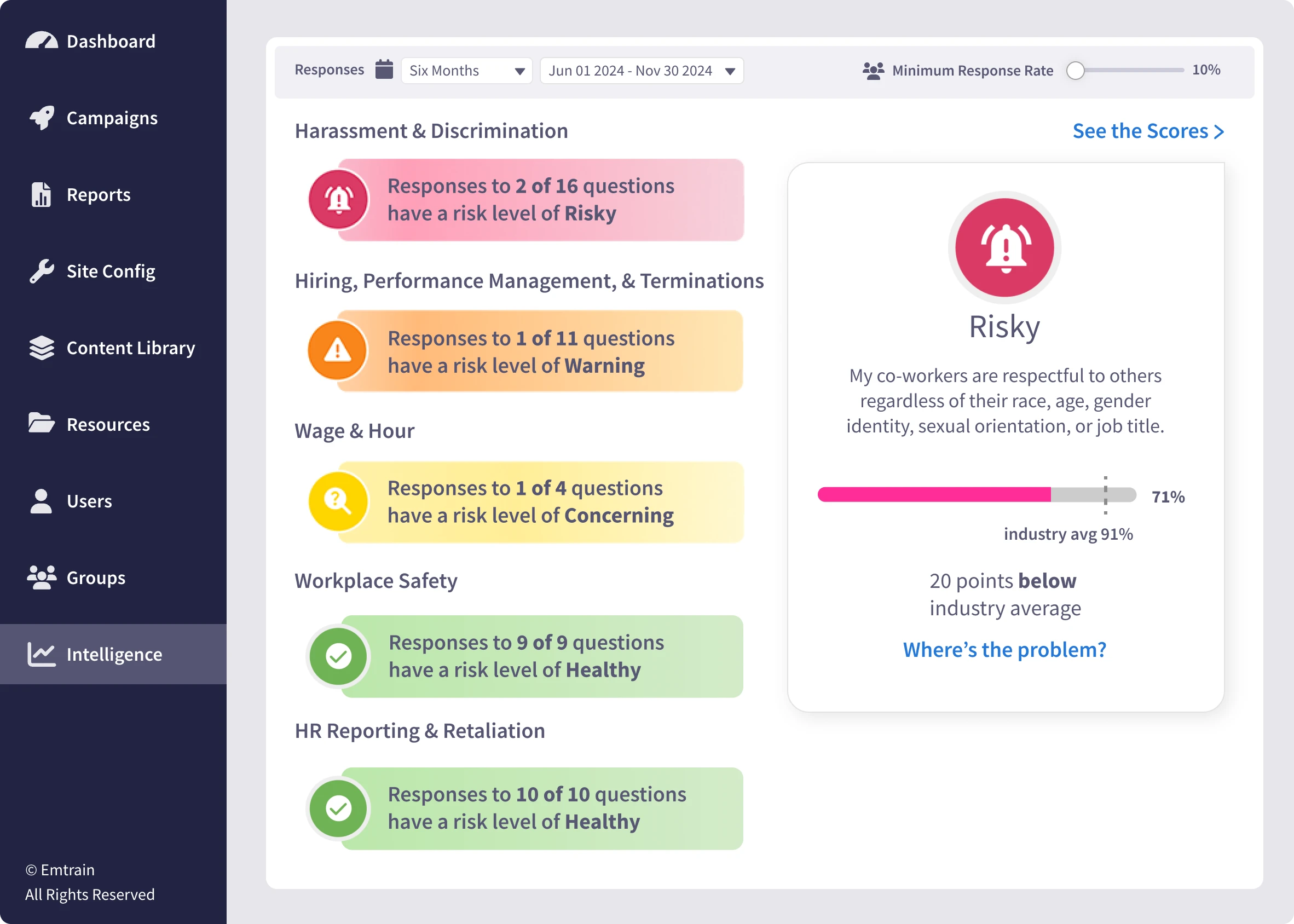Home » Concepts » Diversity, Equity, & Inclusion » Mansplaining
Mansplaining refers to when a man explains something to a woman in a condescending or patronizing way, often assuming she lacks knowledge on the subject. This behavior can stem from implicit biases and is frequently observed in workplace interactions where power dynamics or gender stereotypes are at play.
Mansplaining can undermine a woman’s confidence, disrupt workplace harmony, and perpetuate a culture of inequality if left unaddressed.
Emtrain’s harassment training course is engaging, interactive, and designed to spot and reduce EEO risk.

The term “mansplaining” gained popularity in the 2010s, particularly in feminist discourse, to highlight the subtle ways gender-based power imbalances manifest in everyday interactions. Originally coined after a viral essay by Rebecca Solnit titled Men Explain Things to Me, the term has since become a cultural touchstone for identifying and addressing condescending behavior in professional and personal settings.
In the workplace, mansplaining often arises in male-dominated industries, where women may face skepticism regarding their expertise. Studies have found that women are frequently interrupted during meetings or overlooked for their contributions, which can exacerbate feelings of exclusion.
These scenarios highlight how mansplaining, while often subtle, can have significant impacts on workplace dynamics and employee morale.
Addressing mansplaining requires organizations and individuals to foster open communication and equitable behaviors.
Creating a culture of accountability and allyship is essential for addressing subtle forms of bias like mansplaining.
Preparing for mansplaining situations involves proactive measures, including:
In this microlesson, employees learn how to handle challenging client interactions, including identifying subtle biases and maintaining professionalism under pressure.
This course helps employees identify and prevent subtle biases, such as mansplaining, to foster a workplace environment built on respect and inclusion.
Using gender-inclusive language as part of everyday communication is one of the most effective ways to build an inclusive culture at the ground level.
This blog explores actionable strategies for improving communication, addressing bias, and fostering team collaboration through inclusive language practices.
In a Zoom meeting, a female team member begins sharing her thoughts on a project. Midway through, she’s interrupted by a male colleague. Rather than letting the interruption slide, the manager intervenes, redirects the conversation, and ensures she can complete her point. This sets a powerful example of inclusive leadership and respect.